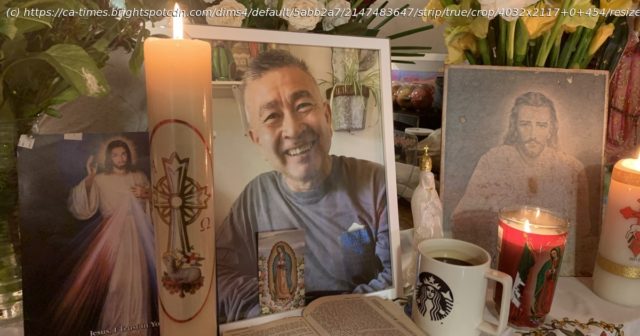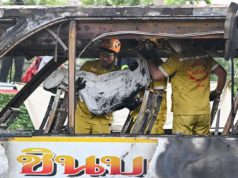Despite a statewide mood of optimism, about 52 Californians are still succumbing to the novel coronavirus each day.
Claudio Arturo Diaz had a lot to celebrate when he turned 64 in February. A beloved husband, father and grandfather who worked four essential jobs, he was now only one year away from his planned retirement. But just hours after he delighted his family with his rendition of the Beatles’ “When I’m Sixty-Four,” Diaz began to feel ill. He was diagnosed with COVID-19 and, within a month, was hospitalized and put on a ventilator. He died in San Rafael on Easter Sunday, April 4 — three days after all Californians ages 50 to 64 became eligible for the COVID-19 vaccine. Despite a statewide mood of optimism as more people get vaccinated and case rates improve, an average of 57 Californians a day are still succumbing to the novel coronavirus. An average of about 12 of those daily deaths are in Los Angeles County, according to data from the past seven days. On the one hand, that’s a huge cause for celebration. During the worst days of the pandemic, California was seeing an average of nearly 600 people per day dying. But the sharp drop in deaths also raises a question: Who is still dying and why? And for families losing loved ones today, the usual pain of loss is compounded by its arrival at a time when the death rate is plummeting. “It’s so unfair,” said Diaz’s daughter, Lin-Yu Diaz,36. “Now we’re getting phone calls about setting up the vaccination, but it’s too late.” Latino populations have been disproportionately affected by the pandemic, and they continue to account for a high number of deaths, though fewer proportionately: For the two-week period ending May 9, about 40% of the people who died of COVID-19 in California were white and 34% were Latino, according to state data. About 10% were Asian; 7% were Black and 9% were multiracial or other. And as in earlier stages of the pandemic, most of those who recently died of COVID-19 — about 59% — were men. Dr. Brad Spellberg, chief medical officer at Los Angeles County-USC Medical Center, said many of the recent deaths have been people like Diaz, who became sick months ago, when the infection rate was high and vaccines weren’t widely available. “These deaths are likely people that were infected in January and February,” he said, noting that the dying process can take that long. Last week, L.A. County-the largest public hospital in the Western United States — had only 21 COVID-19 patients, Spellberg said, down from a peak of about 275 during the devastating autumn-and-winter surge. Notably, only one of the current patients was admitted for COVID-19. The rest came in for other reasons and found out they were positive through the hospital’s routine testing. “All the symptomatic patients we’re seeing now have mild symptoms,” Spellberg said. “They have a cold, they have the flu, they have a slight illness… I don’t think we’ve had a COVID admission to the ICU in probably at least six weeks.” Those sunny statistics can make it even harder for the small group of Californians suffering the loss of loved ones right now. At Martin Luther King, Jr. Community Hospital in South L.A., formerly an epicenter of the pandemic, only eight of the 169 patients admitted the last week of April tested positive for the coronavirus, according to figures provided by the hospital.
Домой
United States
USA — Events As California gains the upper hand on COVID-19, who is still dying?






